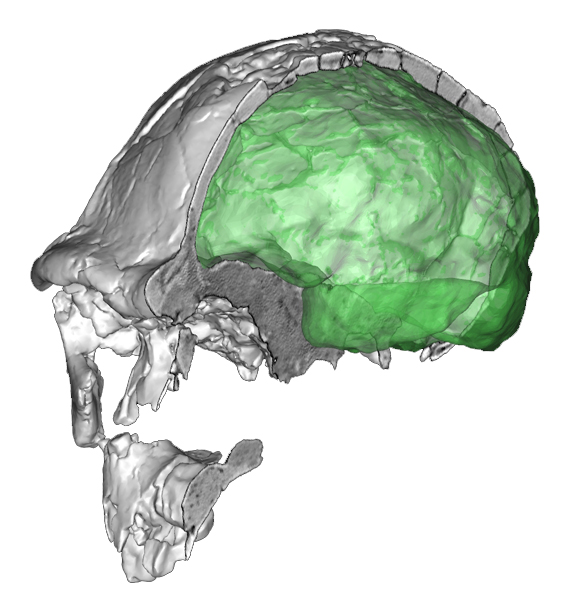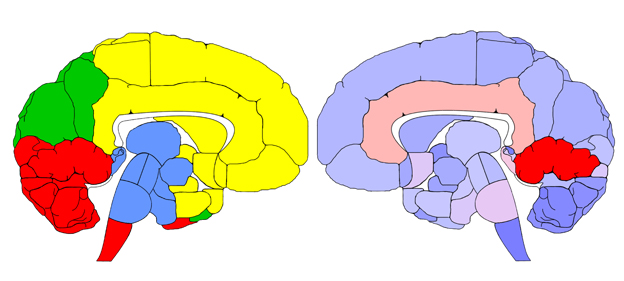After all those papers devoted to network analysis of the human brain topology, now we have published the first brain anatomical model of a distinct species: chimps. Humans and chimps apparently display a very similar spatial organization of the brain, which may suggest a common cerebral arrangement for all hominoids. The inferior and superior brain regions belong to two distinct modules, possibly influenced by the morphogenetic influence of the cranial base and vault, respectively. Nonetheless, in chimps, the dorsal part of the cerebellum is the most topologically complicated region of the brain, while in humans the parahippocampal area displays the most entangled spatial position. In both cases, the cranial base is a key structural region, in particular its posterior (chimps) and middle (humans) fossae. Assuming that the topology of chimpanzee represents a plesiomorph arrangement, we can conclude that the evolution of the brain in Homo sapiens was associated with an increasing topological burden of the temporal lobes, and especially its medial areas. Previous models also evidenced a high topological burden for the retrosplenial cortex. The parahippocampal and retrosplenial areas surround the thalamic regions, and we can hypothesize that during human evolution these anatomical elements experienced new constraints and structural limitations.

